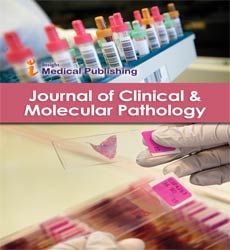ISSN : 2634-7806
Journal of Clinical and Molecular Pathology : Open Access
Artemether and Lumefantrine Combination Therapy Malaria Treatment.
Department of Pharmacy, University of the Western Cape, Cape Town, South Africa
- *Corresponding Author:
- Smith G
Department of Pharmacy , University of the Western Cape, Cape Town, South Africa
E -mail: gumede.smith@gmail.com
Received date: July 09, 2021; Accepted date: July 23, 2021; Published date: July 30, 2021
Citation: Smith G (2021) Artemether and Lumefantrine Combination Therapy – Malaria Treatment. J Clin Mol Pathol Vol.5 No. 3:40.
Description
Artemether and lumefantrine combination therapy is considered well-accepted for the uncomplicated malaria treatment. However, the current available formulation has many pharmacokinetic mismatches such as the drug degradation in the gastrointestinal tract, erratic absorption, etc. Hence, need of the hour is the injectable formulation, which can overcome the pharmacokinetic mismatch associated with the current available formulation in the market. The combination can be used in all types populations except the pregnant mothers in the first trimester where the safety is still uncertain. There are still concerns about the safety and the pharmacokinetics of the drug combination in the children, especially infants, pregnant mothers and drug interactions with mainly the non-nucleoside reverse transcriptase inhibitors and protease inhibitors used for the HIV therapy.
Discussion
Artemether is a potent antimalarial agent that commercially available alone or in the combination with the lumefantrine for the treatment of severe multiresistant malaria. However, the low and the variable oral bioavailability owing to its poor solubility restricts its therapeutic potential. This research study aims to enhance or increase the solubility of the artemether (ART) in Transcutol HP through the microencapsulation process in the sodium alginate polymer to achieve the sustained in the vivo release. Graded concentrations of the ART microcapsules were merely produced using the Tween® 80 by the cold homogenization process at the 24 × 1000 rpm for about say 15 min. Characterization based on the percentage yield, encapsulation efficiency, particle size, or the pH stability studies, differential scanning calorimetry (DSC), Fourier transform infrared spectroscopy (FTIR) method and in the vivo release study using the Peter’s four day suppressive protocol in the Wistar mice infected with the Plasmodium beighei, were determined. The results that are obtained has showed that highest yield of 96.85 percent corresponding to the 0.5 g ARTloaded microcapsules (AMC) whereas the EE of 88.3 percent corresponded to the 0.75 g ART-loaded microcapsules. The DSC revealed that there was a significant reduction in the enthalpy in all formulations when compared to the crystalline drug whereas no strong bond interaction except in the blank microcapsules. There was a dose dependent plasmodial growth inhibition of about 88.75 percentage whereas the AMC0.25 had the least of about 68.13 %. The artemether microcapsules showed that the sustained release characteristics for oral delivery of artemether and therefore may decrease to some of the adverse effects associated with the high dose artemether therapy in the conventional oral tablets.
Conclusion
Current artemether-lumefantrine dosing recommendations had achieved day 7 lumefantrine concentrations of ≥200 ng/ml and the high cure rates in most uncomplicated in the malaria patients. Three groups are at the increased risk of the treatment failure which include very young children particularly those who are underweight for their respective age, patients with the high parasitemias; and the patients in very low transmission intensity areas with the emerging parasite resistance. In these groups, adherence and the treatment response should be monitored closely. Higher, more frequent, or prolonged dosage regimens should now be to be evaluated in the very young children, particularly if they are malnourished, and in patients with the hyperparasitemia.
Open Access Journals
- Aquaculture & Veterinary Science
- Chemistry & Chemical Sciences
- Clinical Sciences
- Engineering
- General Science
- Genetics & Molecular Biology
- Health Care & Nursing
- Immunology & Microbiology
- Materials Science
- Mathematics & Physics
- Medical Sciences
- Neurology & Psychiatry
- Oncology & Cancer Science
- Pharmaceutical Sciences
